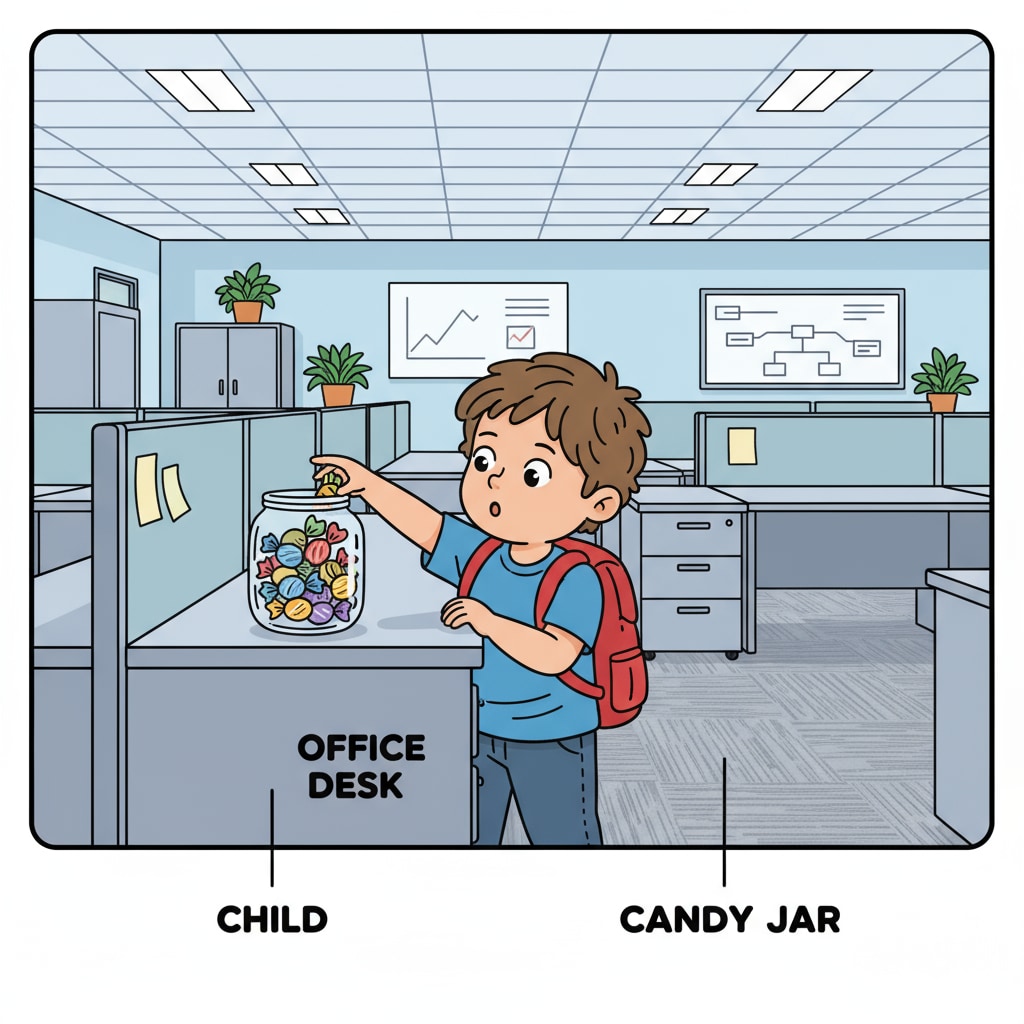In the modern workplace, the intersection of workplace boundaries, kinship, and child behavior management can present unique challenges. Consider the “candy incident” that occurred in an office setting, which highlighted these complex issues. One day, an employee brought their relative’s child to work for a short period. The child, excited by the new environment, started rummaging through desks and taking candies from colleagues’ drawers without asking. This simple act led to a series of unexpected consequences, testing the limits of workplace decorum and relationships.

The Impact on Workplace Boundaries
The “candy incident” immediately blurred the lines between the personal and professional spheres. Colleagues who had neatly organized workspaces suddenly found their personal items being disrupted. This intrusion on their privacy made some feel uncomfortable, as the workplace is typically a space where boundaries are respected. For example, a co-worker who had a particular candy stash for stress relief was now faced with an empty drawer. This incident showed how quickly a child’s innocent actions can disrupt the established order of a workplace. As a result, it became clear that clear boundaries need to be set when children are present in the workplace.

Kinship and the Ethical Dilemma
The employee who brought the child to work was in a difficult position due to kinship. On one hand, they felt responsible for the child’s well-being and had made a commitment to watch over them. On the other hand, they were now aware of the negative impact on their colleagues. This created an ethical dilemma. They needed to balance their family obligations with their professional responsibilities. In such situations, open communication is key. By talking to colleagues and explaining the situation, the employee could start to repair the damage and find a way to move forward. However, this requires a delicate approach to avoid further straining relationships.
Effective Child Behavior Management
To address the situation, it was essential to focus on child behavior management. First, the employee needed to have a calm and firm conversation with the child. Explain why it’s important to ask before taking things. Teach them basic workplace etiquette, such as not disturbing others’ workspaces. For instance, using simple examples like “If you want a toy at a friend’s house, you ask first, right? It’s the same here.” This approach helps children understand the rules in a relatable way. Additionally, setting clear consequences for future misbehavior can be effective. If the child repeats the action, they might have to sit quietly for a few minutes as a time-out. This not only corrects the behavior but also shows the child that actions have consequences.
In conclusion, the “candy incident” serves as a valuable lesson in workplace boundaries, kinship, and child behavior management. By addressing these issues head-on, employees can navigate these complex situations while maintaining a positive work environment. It’s all about finding the right balance between personal and professional responsibilities, and using effective communication and educational strategies to guide children’s behavior. Child Development on Psychology Today Raising Well-Behaved Children on Verywell Family
Readability guidance: The article uses short paragraphs and lists to summarize key points. Each H2 section provides practical advice. The passive voice is minimized, and transition words are used throughout to enhance flow. This approach makes the content accessible and easy to understand for readers facing similar workplace challenges.


